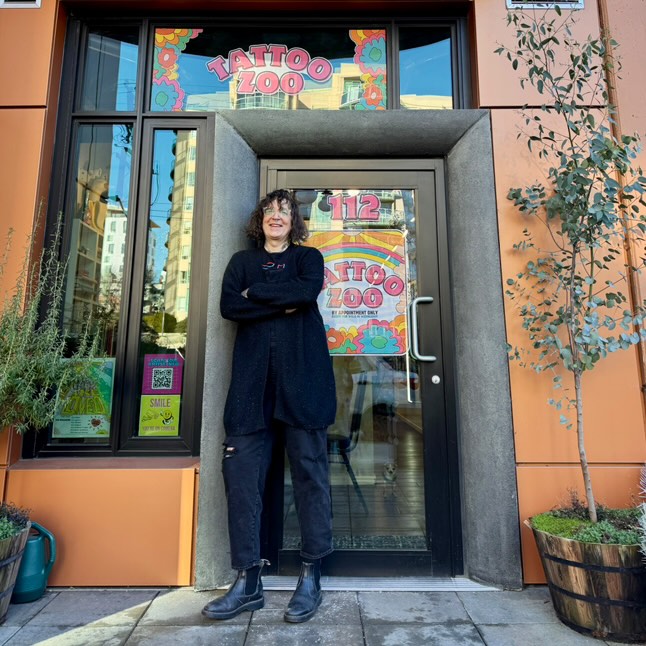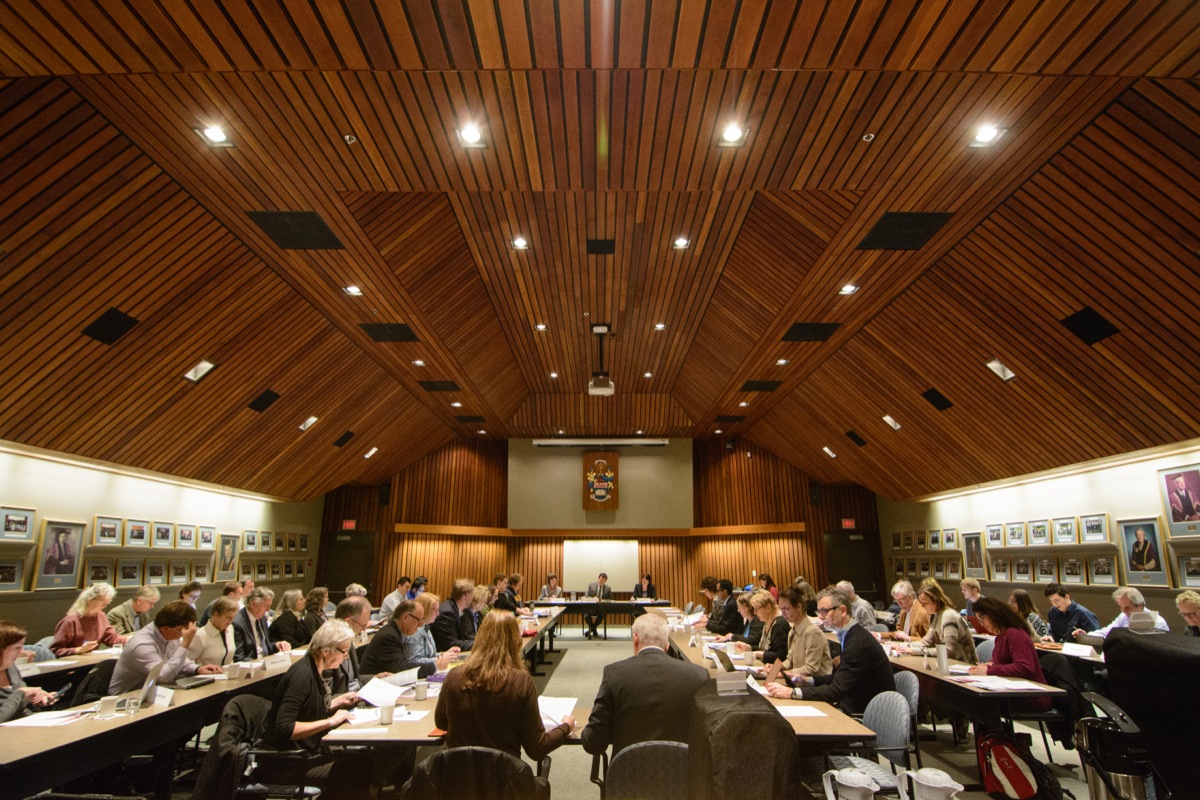Local transgender tattoo artists speak on the intersection of trans joy and tattoos

Photo by Sarah Kramer.
A 2021 study by the National Library of Medicine revealed that, on average, 45 per cent of transgender individuals reported having tattoos. Canada’s national average for tattooed individuals is close to 33 per cent. Transgender participants in the study reported “gender identity expression” and “body ownership” as common reasons for getting tattoos.
The Martlet sat down with transgender tattoo artists in Victoria, B.C. to ask about the relationship between their trans identities and tattoos.
“Tattoos can be like touching a sacred object that you keep in your pocket,” shared Grae Salisbury (they/them), who has been a tattoo artist since 2021. “To remind yourself and centre yourself, and be like, ‘I do understand where I am, and how I’m standing, and who I am,’ when people around you have no idea, and do not get it,” they said.
Coen Nobel (he/they), another local tattoo artist, echoed this sentiment. “Tattooing was a huge part of coming to terms with my transness,” he said.
Nobel, who has also been tattooing since 2021, recounted how tattoos gave him control over how people perceived him, helping him express who he truly is.
“Having tattoos has made me feel like myself,” he said.
In addition to having their trans identities affirmed by their own tattoos, artists also emphasized the community connections they are able to make with other trans and queer people through the art of tattooing.
Geri Kramer (she/her) owns Tattoo Zoo downtown, and has been a tattoo artist since 1997.
“I tattoo a lot of trans people because I think we just like to support each other,” Kramer said.
Salisbury recounted waiting to get their first professional tattoo until a lesbian tattoo artist came to their town. “It was really important to me to get tattooed by queer people,” they said.
Before that, they experimented with their first ink in basements with their queer friends. “It was a way we could bond and share something intimate, and it was a way for us, through community, to decorate ourselves and be seen.”
Legislation threatening transgender people’s access to gender affirming care is on the rise right now, both in the United States and Canada. Gender affirming care, as defined by the World Health Organization, is “a number of social, psychological, behavioural or medical (including hormonal treatment or surgery) interventions designed to support and affirm an individual’s gender identity.”
Trans people’s use of tattoos to feel at home in their bodies and build community can be considered a part of gender affirming care for some.
“I think tattoos are gender affirming care for anyone, whether you’re trans or cis,” Salisbury explained. “Just like wearing clothes that make you feel euphoric is about gender and care.”
Kramer also shared her belief that, although tattooing is non-gendered, often the motivations behind getting tattooed can be to affirm someone’s gender presentation.
“[With] a lot of the people I tattoo, there is some aspect of gender in what they’re doing and why they’re doing it,” she said.
As access to gender affirming care becomes stricter, pushing trans and queer bodies further into the margins, tattoos are a method of resistance.
“Tattoos were one of my first ways of not conforming,” Nobel said of his trans journey. Kramer also shared that her start in tattooing was motivated by not wanting to conform to the status quo — even before she came out as a trans woman.
“Subcultures do transform the mainstream, and being a part of that at all is being a part of something kind of political,” Kramer said.
“It’s definitely an act of resistance. It’s an act of joy and care. It’s not only self-care, but it is communal care to be visible in public,” Salisbury said, adding that there were times in their life that they felt safer because of others’ tattoos, which visibly signalled that they were also queer.
“Being visibly trans or queer more gives people evidence that they will be alive later, and that life’s going to be okay,” Nobel added.
A growing transgender clientele and workforce are changing the tattoo industry, claimed Kramer. “Trans people and tattooing are really flipping things, bringing in a lot of bodily autonomy talk.”
As censorship of the transgender community continues to rise in legislation, being visibly trans and queer through tattoos is becoming vital to transgender visibility and resistance.
“You can still have a job. You can still live your life,” says Nobel. “I have silly little tattoos all over me. It doesn’t make me any less.”








